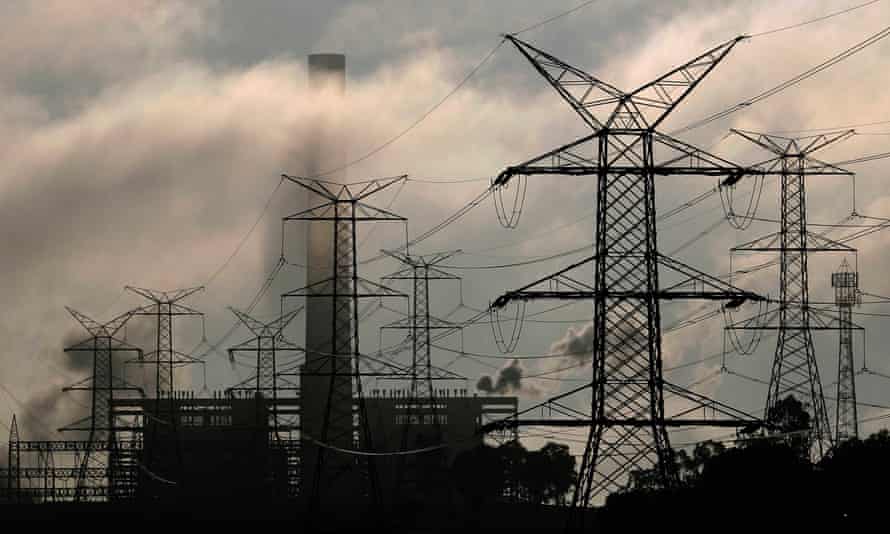Extract from The Guardian
Consortium plans to produce green hydrogen with wind and solar energy as a potential replacement for Hunter Valley’s coal industry

Last modified on Mon 17 May 2021 16.06 AEST
Australia’s first “hydrogen valley” would be created in New South Wales and run entirely on renewable energy under a $2bn proposal supported by local and global energy companies.
Led by renewables advisory business Energy Estate, the consortium says it plans to produce green hydrogen with wind and solar energy and use it as a feedstock for mining, transport and industrial users in the upper Hunter Valley, spruiking it as a potential replacement for the region’s coal industry.
If successful, a second stage would pipe hydrogen to Newcastle, where it could be used to help run a clean energy industrial precinct. Vincent Dwyer, a principal at Energy Estate, said it could provide zero-emissions feedstock for chemical manufacturing and allow the development of green ammonia for export.
Companies said to be looking at getting involved in the Hunter hydrogen network include AGL Energy, pipeline operator APA Group, Idemitsu (the Japanese owner of a Muswellbrook coalmine), commodities trader Trafigura and renewable energy developers RES Australia and Walcha Energy.
“We’re not wanting to own all of these opportunities,” Dwyer said. “We’re wanting to enable them to occur by building the backbone infrastructure and then partner with people.”
The proposal announcement follows the Morrison government’s budget commitment of $275m over five years to help develop five hydrogen “hubs” in regional areas. The government’s pledge is to support “clean” hydrogen, which could include “green” hydrogen made with renewable energy and “blue” hydrogen fossil fuels backed by carbon capture and storage.
The government was expected to announce funding for the hubs next year, with potential sites including the Hunter Valley, Tasmania’s Bell Bay, the Pilbara region in Western Australia, Gladstone in Queensland, Victoria’s Latrobe Valley, the Eyre Peninsula in South Australia and Darwin. Its goal is to help reduce the cost of producing hydrogen to $2 a kilogram.
Dwyer said Energy Estate was yet to discuss its proposal with the government. He said it would not be looking for public backing “for the cost of the electrons”, but hoped to discuss “how to plan the infrastructure to allow the hydrogen to occur”.
“The federal government is after good ideas and we’re hoping it would get behind it,” he said.
Green hydrogen is created by using an electrolyser to run an electrical current through water, separating it into hydrogen and oxygen. Hydrogen can also be made using gas through a different process that releases carbon dioxide. Under the government’s proposal, it would need to be captured and either used or pumped underground.
An analysis by BloombergNEF last year suggested green hydrogen could become the cheapest form of fuel much faster than expected, citing evidence of Chinese manufacturers already using electrolysers that cost about 80% less than estimates released by CSIRO in 2018.
The Hunter Valley proposal would involve green hydrogen being produced on the site of a repurposed coalmine at Muswellbrook by 2024 and piped to near the Liddell coal plant, which is to close in 2023.
Under the second stage, more electrolysers would be installed near Liddell between 2022 and 2026, and an additional hydrogen pipeline would run from there to Newcastle, allowing development of a clean energy precinct near the port. The operation would be powered by solar and wind farms backed by batteries in a renewable energy zone on the Walcha plateau. New electricity transmission lines would be needed to connect the zone with a substation at Liddell.
Under a possible third stage, another hydrogen pipeline could be built to the central west and New England renewable energy zones, which are to be developed under legislation that passed the NSW parliament last year.
Hannah McCaughey, an executive with APA, said the company was excited to be part of projects that could “support a lower carbon future and potentially unlock Australia’s unrivalled advantages in hydrogen”.
There have been varying estimates of the role that hydrogen is likely to play in replacing fossil fuels. It is hoped it could become an affordable emissions-free alternative to fossil fuels in industries that operate at incredibly high temperatures and in some large-scale transport, in particular.
The Australian government has named “clean” hydrogen one of five “low-emissions” technology priorities and estimated it could create more than 8,000 jobs and generate about $11bn a year in GDP by 2050.
No comments:
Post a Comment